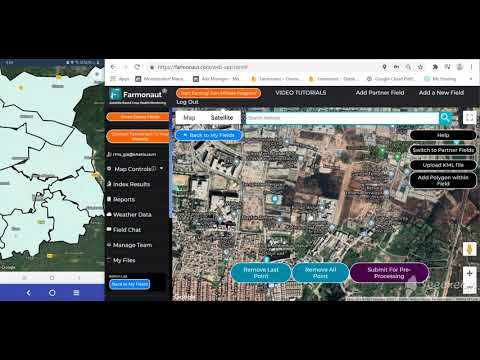Breaking: Military Takes Control of US-Mexico Border Lands for Enhanced Security Measures
“The US-Mexico border spans approximately 1,954 miles, with the new directive affecting significant portions of federal lands along this stretch.”
In a landmark decision that marks a significant shift in US border jurisdiction and security operations, the military has been granted control over key federal lands along the US-Mexico border. This move, aimed at intensifying efforts to curb illegal crossings, represents a major evolution in homeland security border measures. As we delve into the implications of this decision, we’ll explore how it affects various aspects of border control and its potential impact on border communities.

The Directive: A New Era in Border Defense
On Friday, U.S. President Donald Trump issued a directive that grants the Department of Defense full “use and jurisdiction” over key border areas, including the Roosevelt Reservation. This federally owned 60-foot-wide strip of land spans parts of California, Arizona, and New Mexico. The memo, sent to four Cabinet secretaries – Doug Burgum (Interior), Kristi Noem (Homeland Security), Pete Hegseth (Defense), and Brooke Rollins (Agriculture) – outlines a comprehensive plan to designate these lands as a “military installation.”
This new approach to US-Mexico border security significantly expands the military’s role in domestic border enforcement. Under this directive, military personnel will be empowered to:
- Build and reinforce the border wall
- Install advanced surveillance systems
- Conduct regular patrols along designated federal lands
However, it’s crucial to note that while the military’s presence and capabilities are being enhanced, they will not have the authority to carry out immigration arrests. This responsibility remains with U.S. Border Patrol agents, maintaining a clear distinction between military operations and law enforcement activities.
The Roosevelt Reservation: A Key Focus Area
“The Roosevelt Reservation, now under military control, is a 60-foot wide strip of land that runs along 1,254 miles of the US-Mexico border.”
The Roosevelt Reservation, a critical component of federal lands border control, is now at the forefront of this new security strategy. This narrow strip of land, established in 1907 by President Theodore Roosevelt, has long been an essential area for border patrol operations. With the new directive, we can expect to see significant changes in how this land is utilized for border defense operations.
Under military control, the Roosevelt Reservation is likely to see:
- Enhanced fortification of existing border structures
- Deployment of state-of-the-art surveillance technology
- Increased presence of military personnel for monitoring and rapid response
These measures aim to create a more robust and technologically advanced border defense system, potentially reducing illegal border crossings and enhancing overall security along this crucial stretch of land.
Impact on Border Wall Construction and Surveillance
One of the most significant aspects of this new directive is its potential to accelerate and enhance border wall construction. With the Department of Defense now having jurisdiction over key border areas, we can expect to see:
- Streamlined processes for wall construction and reinforcement
- Integration of advanced materials and designs for improved effectiveness
- Coordination between military engineers and border security experts
Moreover, the installation of border surveillance systems is likely to see a significant upgrade. Military-grade technology could be deployed, including:
- High-resolution cameras and thermal imaging systems
- Drone surveillance networks
- Advanced motion and intrusion detection sensors
These enhancements in border surveillance systems are expected to provide a more comprehensive and real-time view of border activities, enabling faster response times and more effective interception of illegal crossings.
Military Patrols and Coordination with Border Patrol
While the military will now have a more prominent role in patrolling designated federal lands, it’s important to understand the nuances of this arrangement. Military personnel will be empowered to intercept individuals crossing the border illegally, but they will not have the authority to make arrests. Instead, they will work in close coordination with U.S. Border Patrol agents.
This collaboration is expected to unfold as follows:
- Military patrols will monitor and identify potential illegal crossings
- Upon interception, military personnel will secure the area and detain individuals
- Border Patrol agents will be called in to handle arrests and processing
This approach aims to leverage the military’s resources and manpower while maintaining the legal framework that governs immigration enforcement.

Exclusions and Considerations
It’s crucial to note that this directive explicitly excludes Federal Indian Reservations from military control. This exclusion respects the sovereignty of Native American lands and maintains existing jurisdictional arrangements for these areas.
Additionally, the directive raises several important considerations:
- Environmental impact of increased military presence and construction
- Potential effects on local communities near the border
- Legal and ethical implications of expanding military roles in domestic affairs
These factors will likely be subjects of ongoing debate and scrutiny as the new measures are implemented.
Comparative Analysis: Previous vs. New Border Control Measures
To better understand the significance of this shift in border control strategy, let’s examine how the new military-led approach compares to previous measures:
| Border Area/Feature | Previous Control Measures | New Military-led Measures | Estimated Impact on Security |
|---|---|---|---|
| Roosevelt Reservation | Border Patrol monitoring | Military control and fortification | High |
| Border Wall Construction | Civilian contractors, slow progress | Military engineering, accelerated timeline | High |
| Surveillance Systems | Basic cameras and sensors | Advanced military-grade technology | High |
| Patrol Operations | Primarily Border Patrol agents | Joint military-Border Patrol operations | Medium |
| Immigration Arrests | Border Patrol responsibility | Remains Border Patrol responsibility | Low |
| Federal Indian Reservations | Existing jurisdictional arrangements | Excluded from military control | Low |
This comparison highlights the significant changes in approach, particularly in areas of construction, surveillance, and overall border control strategy. The estimated impact on security is notably high in areas where military resources and expertise are being directly applied.
Potential Implications for Border Communities
As we consider the implementation of these new border defense operations, it’s important to acknowledge the potential impacts on communities along the US-Mexico border. These implications could include:
- Increased military presence in everyday life
- Potential economic effects due to changes in border dynamics
- Shifts in local employment related to border security
- Environmental concerns due to accelerated construction and surveillance activities
Community leaders and local governments will likely play a crucial role in navigating these changes and ensuring that the needs and concerns of border residents are addressed as this new strategy unfolds.
Legal and Constitutional Considerations
The expansion of military involvement in domestic border enforcement raises important legal and constitutional questions. Key areas of consideration include:
- The Posse Comitatus Act, which limits the use of military in domestic law enforcement
- Constitutional implications of military operations on U.S. soil
- Potential challenges to the directive in federal courts
- International law considerations regarding border militarization
Legal experts and constitutional scholars will undoubtedly be closely monitoring the implementation of this directive and its alignment with existing laws and precedents.
International Relations and Diplomatic Implications
The decision to militarize portions of the US-Mexico border could have significant implications for international relations, particularly with Mexico. Potential diplomatic considerations include:
- Reactions from the Mexican government and potential diplomatic tensions
- Impact on cross-border cooperation in areas such as trade and law enforcement
- Perceptions of the United States in the international community
- Potential effects on regional stability and cooperation
Diplomatic efforts will likely be crucial in maintaining positive relations with Mexico and other international partners as these new measures are implemented.
Technological Advancements in Border Security
The involvement of the military in border control is likely to bring about significant technological advancements in security measures. Some of the cutting-edge technologies that might be deployed include:
- AI-powered surveillance systems for pattern recognition and predictive analysis
- Advanced drone technology for aerial monitoring and rapid response
- Satellite-based monitoring systems for comprehensive border oversight
- Biometric identification systems for enhanced screening processes
These technological advancements could significantly enhance the effectiveness of border security efforts. For instance, satellite-based monitoring systems, similar to those used in precision agriculture by companies like Farmonaut, could be adapted for large-scale border surveillance. Farmonaut’s expertise in satellite imagery analysis for crop monitoring could potentially be applied to border security contexts, showcasing how agricultural technology can have wider applications.
Environmental Impact and Conservation Efforts
The expansion of military control over border lands raises important questions about environmental conservation. Key considerations include:
- Potential disruption of wildlife habitats and migration patterns
- Impact on protected species in border regions
- Efforts to balance security needs with environmental preservation
- Incorporation of sustainable practices in border infrastructure development
Environmental agencies and conservation groups will likely play a crucial role in monitoring and mitigating any negative impacts on the border ecosystem.
Economic Implications of Enhanced Border Security
The new border control measures are expected to have significant economic implications, both locally and nationally. Some key economic factors to consider include:
- Increased government spending on border security infrastructure and personnel
- Potential impacts on cross-border trade and commerce
- Job creation in border security and related industries
- Long-term economic effects on border communities and states
Economists and policy analysts will be closely watching how these changes affect regional and national economic indicators.
Future of US Border Policy
As we look to the future, this shift in border control strategy raises questions about the long-term direction of US border policy. Key considerations for the future include:
- Potential for further militarization of other aspects of border security
- Evolution of immigration policies in response to enhanced border control
- Development of new technologies specifically for border defense
- International cooperation and agreements on border security measures
The effectiveness and outcomes of this new approach will likely shape border policies for years to come, potentially setting precedents for how nations manage their borders in an increasingly complex global landscape.
FAQ Section
Q: Will the military be making arrests at the border?
A: No, the military will not have the authority to make immigration arrests. This responsibility remains with U.S. Border Patrol agents.
Q: How will this affect legal border crossings and trade?
A: The directive primarily focuses on illegal crossings. Legal border crossings and trade are expected to continue under existing protocols, though there may be increased security measures.
Q: Are all border areas now under military control?
A: No, the directive specifically applies to certain federal lands, including the Roosevelt Reservation. Federal Indian Reservations are explicitly excluded.
Q: How will this impact border communities?
A: Border communities may see increased military presence and potential changes in local dynamics. The full impact will become clearer as the measures are implemented.
Q: Is this move constitutional?
A: The constitutionality of this directive may be subject to legal scrutiny and potential court challenges in the future.
Conclusion
The decision to grant military control over key US-Mexico border lands marks a significant shift in border security strategy. This move, aimed at enhancing border defense operations and curbing illegal crossings, brings with it a host of implications – from legal and environmental concerns to economic and diplomatic considerations.
As we navigate this new era of border control, it will be crucial to balance security needs with other important factors such as community impact, environmental preservation, and international relations. The effectiveness of these measures in addressing border security challenges will undoubtedly be closely monitored and debated in the coming months and years.
This evolving situation underscores the complex nature of border security in the modern world, where technological advancements, geopolitical considerations, and domestic policies intersect. As we move forward, continued dialogue, careful analysis, and adaptive strategies will be essential in addressing the multifaceted challenges of border security while upholding the values and interests of all stakeholders involved.
Earn With Farmonaut: Affiliate Program
Earn 20% recurring commission with Farmonaut’s affiliate program by sharing your promo code and helping farmers save 10%. Onboard 10 Elite farmers monthly to earn a minimum of $148,000 annually—start now and grow your income!







